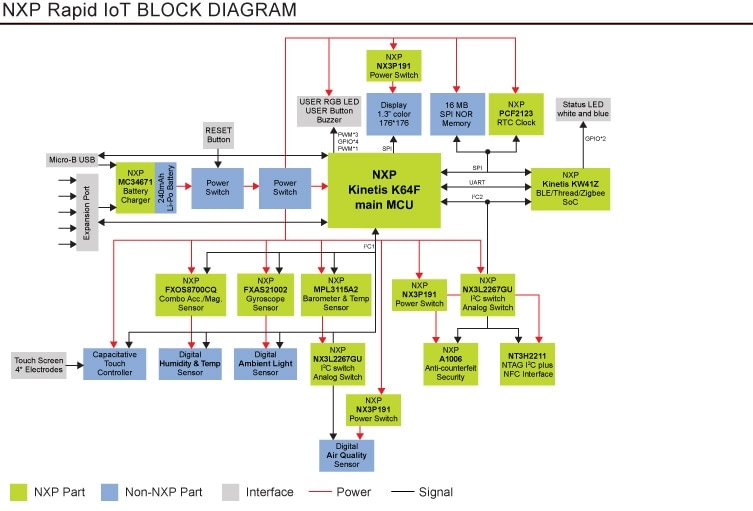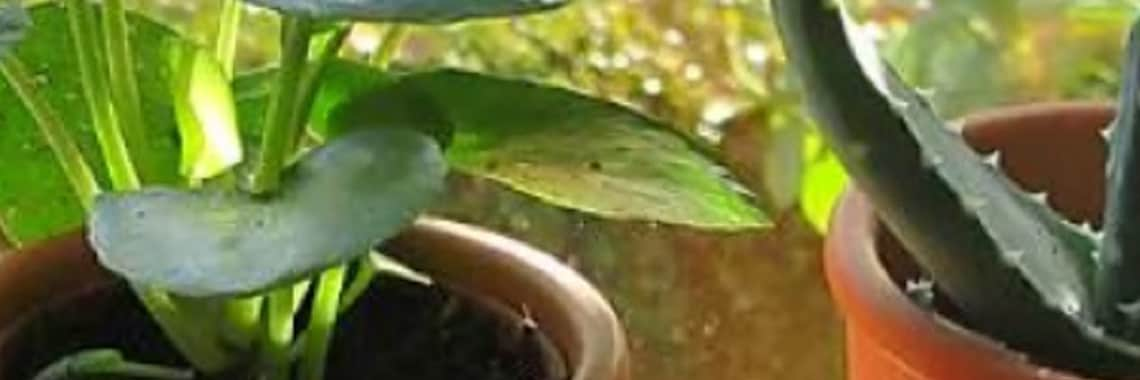Research shows having plants in a home not only improves the aesthetics of a
home but also provides health benefits including toxin removal from the air,
mood improvement and an increase in memory retention and focus. No wonder why
homeowners have plants throughout their home to take advantage of these
benefits. In today’s busy world, it is easy to forget to nutrify, water
and monitor the condition of the plants to maximize their lifetime. To address
this, homeowners need an easy and cost-effective solution that monitors the
health of their plants so they provide the appropriate care.
Solution
NXPs
rapid IoT prototyping kit
can be used to develop a smart botanical garden. The kit integrates eleven
NXP® devices in a small form-factor hardware design and
combines it with proven software enablement and a web IDE with GUI based
programming. Refer to Figure 1 for the complete block diagram.
Rapid IoT provides the easiest path for anyone to take an idea to a
proof-of-concept by simplifying the design process. It eliminates the need to
write code and integrates all the necessary functions required by an IoT
device including the ability to sense, think and act.

Figure 1. Rapid IoT Prototyping Kit Block Diagram
Design Considerations and Implementation
Figure 2 shows the botanical garden conceptual design. Through a smartphone
app you can monitor and control the temperature, humidity and ambient light
via Bluetooth Low Energy communication. For data storage and enhanced communication capability,
the smartphone device and/or botanical garden control unit should be able to
transmit/receive data from the cloud via Wi-Fi or 4G connectivity.
A humidifier and external pump are added to water the plants and add humidity
as necessary.

Figure 2. Botanical Garden Design with Rapid IoT
To design this botanical garden using the Rapid IoT kit, the following
criteria is considered:
-
The control unit should have a UI to locally monitor the temperature,
humidity and ambient light.
-
The smart device should have a UI to wirelessly manage and control the
control unit via Bluetooth Low Energy or Wi-Fi.
-
Data processed and acquired can be uploaded securely to the cloud for future
analysis.
Hardware and Software needed:
- Rapid IoT kit
- Docking station
- Smart phone
- Rapid IoT online IDE
Results
The rapid IoT design combines the rapid IoT kit with a docking station
expansion board to control a GPIO pin that switches the humidifier and/or pump
on or off per commands sent via Bluetooth Low Energy from a smartphone. The temperature,
humidity and ambient light sensors are set to read data every second but this
interval can be changed according to the application requirements. The control
unit and smartphone UI were designed using the Rapid IoT Studio IDE tool
without writing a single line of code.
Figure 3 and 4 show the Rapid IoT IDE studio design and the complete setup.
Figure 5 and 6 show the Rapid IoT smartphone UI design and the application,
which is used to wirelessly monitor and control the environment around the
plants.
All the necessary files to build and test this design can be found in
this NXP community thread.
![Rapid IoT Studio – Function Design]()
Figure 3. Rapid IoT Studio – Function Design

Figure 4. Rapid IoT Kit Hardware – Complete setup

Figure 5. Rapid IoT Studio –Smart Phone UI Design

Figure 6. Botanical Garden Smart Phone Application
Additional Resources
Get Rapid IoT Prototyping Kit Today
Step-by-Step Easy to Follow Setup Instructions
Authors











